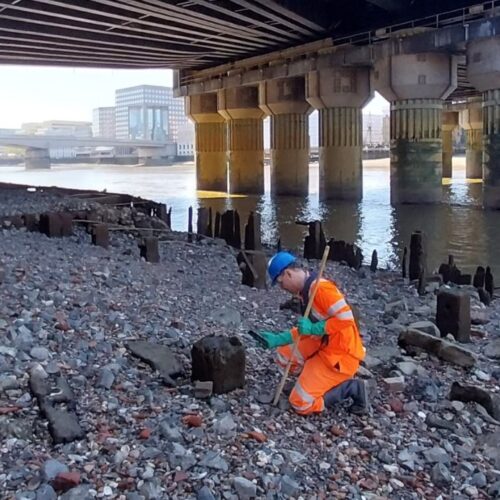What is natural capital?
Although it may seem difficult to put a price on nature, the concept of natural capital seeks to accomplish this. As per the UK government’s definition, “Natural capital includes certain stocks of the elements of nature that have value to society, such as forests, fisheries, rivers, biodiversity, land and minerals. Natural capital includes both the living and non-living aspects of ecosystems” (1).
A Natural Capital Approach is defined by Voora & Venema (2008) as “a means for identifying and quantifying the natural environment and associated ecosystem services leading to better decision-making for managing, preserving and restoring natural environments”. The approach can be applied to decision making on a local scale, up to decisions affecting ecosystems regionally or nationally. Natural capital is assessed by measuring the extent of an asset or ecosystem, establishing its health or condition, and calculating the monetary value of both the asset, and the ecosystem services and other benefits it provides (3). Natural capital assessments allow decisions to be made about ecosystems in a holistic manner, with a mind to making exploitation sustainable, without perturbing the systems’ vital functions.
Natural Capital and benthic ecosystems
With most of the planet covered by oceans, the marine benthos, or seabed, constitutes one of the largest habitats by area on Earth. However, in comparison to terrestrial ecosystems, research regarding natural capital has lagged. This is due to a lack of accurate mapping of the seabed and because methodologies must be adapted from a terrestrial scope (4). As most human marine activity centres around the 5% of the Earth’s surface on the continental shelf, this is where most marine assessments have been done. In the UK, valuation has extended to the edge of the Exclusive Economic Zone (EEZ) which lies entirely within the continental shelf, with the UK’s marine natural capital assets estimated to be worth £211 billion as of 2021 (5). The question is whether those accounts use data of enough quality to result in an accurate and robust assessment of natural capital. For if these assessments are to be utilised to inform marine management decisions, it is imperative that they are as accurate as possible.
Effectiveness of natural capital approach for marine benthos
The classifications of coastal and marine habitats used in natural capital assessments are generally very coarse, and such broad habitat types are an inadequate representation of true natural capital (6). Broad classifications do not consider different benthos types, and key functional groups of organisms are often not represented. For example, mud and sand habitats support different ecosystem services, and subtidal sediments with biogenic habitats such as oyster, worm or mussel reefs function very differently to those without (7). The disaggregation of vegetated habitats from broader sedimentary habitats was a step forward, however, still doesn’t go far enough. For example, the Office for National Statistics breaks down only 3 habitats for their carbon sequestration data (salt marshes, sublittoral sands, and sublittoral muds), highly simplifying the reality of the environment.
Although the benthos is currently underrepresented, we can already see examples of the natural capital approach beginning to have a positive impact. Benthic habitats in the Solent have been assessed, with the benefits from nutrient cycling and carbon removal estimated to be over £1 billion (3). There are countless additional benefits and services these habitats provide, so the true monetary value of these ecosystems both within this region and similar ones throughout the UK must be substantially greater. Assessments of generally underappreciated habitats like these mean that their extent and condition is explicitly linked to a monetary value, giving a tangible socio-economic benefit to conservation measures.
The future of natural capital
The assessment of natural capital stocks in the marine environment should have a great impact on the way marine conservation measures are decided and implemented, with socio-economic outcomes and how these depend on natural resources integrated into policy approaches.
As a result of the Natural Capital Committee (NCC), which ran from 2012 to 2020, the natural capital approach is now included within HM Treasury’s Green Book for appraising policies, programmes and projects, and DEFRA have published the ENCA (Enabling a Natural Capital Approach) guidance for policy and decision making.
Whilst this shows that the natural capital approach is firmly within the zeitgeist in this area, actual implementation seems to be lacking for the marine environment. In 2019, the Marine Management Organisation (MMO) stated that “no clear definition of what the natural capital approach is for the marine area exists” (8). This highlights the fact that work is required to achieve best practice and consistent implementation, which will bring maximum benefits for the environment and humans alike.
Author: David Boyton
References
1. HM Treasury (2022). The Green Book, Central Government Guidance on Appraisal and Evaluation, Chapter 6, pg.63.
2. Voora, V.A., Venema, H.D. and Policy, V.A.V., 2008. The natural capital approach: a concept paper.
3. Watson, S.C., Preston, J., Beaumont, N.J. and Watson, G.J., 2020. Assessing the natural capital value of water quality and climate regulation in temperate marine systems using a EUNIS biotope classification approach. Science of the total Environment, 744, p.140688.
4. Hooper, T., Börger, T., Langmead, O., Marcone, O., Rees, S.E., Rendon, O., Beaumont, N., Attrill, M.J. and Austen, M., 2019. Applying the natural capital approach to decision making for the marine environment. Ecosystem Services, 38, p.100947.
5. ONS. Marine accounts, natural capital, UK: 2021. Marine accounts, natural capital, UK – Office for National Statistics (ons.gov.uk)
6. Mace, G.M., Hails, R.S., Cryle, P., Harlow, J. and Clarke, S.J., 2015. Towards a risk register for natural capital. Journal of Applied Ecology, 52(3), pp.641-653.
7. Potts, T., Burdon, D., Jackson, E., Atkins, J., Saunders, J., Hastings, E. and Langmead, O., 2014. Do marine protected areas deliver flows of ecosystem services to support human welfare?. Marine Policy, 44, pp.139-148.
8. Hooper, T. 2021. Case studies on the natural capital approach in marine decision making: The development of fisheries management byelaws. JNCC Report No. 685 (Research & Review Report), JNCC, Peterborough, ISSN 0963-8091.











